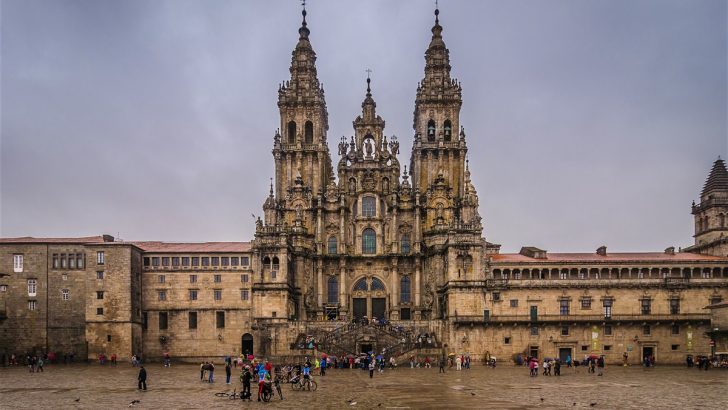Medieval Pilgrims to Santiago de Compostela
by Bernadette Cunningham (Four Court Press, €19.95)
I never pass St James’s Gate in Dublin without thinking of that ancient city portal as the starting place of the medieval version of the Camino. It has long seemed to me those wishing to promote the way of St James here in Ireland were missing a trick in not making more public use of this ancient fact to promote what they have on offer.
However, as Bernadette Cunningham makes plain, the modern, or let’s say, the current Camino is very different from the medieval one.
Today it is seen very much as a matter of a personal challenge. “Nurtured by a politics of European integration,” she writes,” and with a growing emphasis on multiculturalism and environmental spirituality, at a time of declining Sunday attendance at formal Christian liturgies, the pilgrimage has probably changed more in the past 40 years than in the previous 800 years since it first began to draw pilgrims to Galicia’s shores.”
Indeed some “pilgrims” arrive at Santiago today and go nowhere near the saint’s shrine. Others pass on, and at sunset wade into the sea at Finisterre, offering up their endeavours to whatever power it is they believe moves the universe.
So the question is “what do they know of the Camino who only the modern Camino know?” The answer would seem to be very little, and a large part of the intention of those like General Franco who wanted his native Galicia to have its own tourist attraction, very different to the flesh pots of the beaches along the Costa del Sol and the Costa Brava.
There have been many books on the Camino some of exceptional merit, such as that by the Irish litterateur Walter Starkie. Bernadette Cunningham mentions several of these; but here real interest is in the Irish Pilgrims from the 13th Century onwards. She lists some of these whom we know of from 1222 down to 1753. It is this world that she explores.
Long voyage
St Jame’s Gate was not the only place from which pilgrims started: her maps show towns scattered all over Ireland, the routes to the southern ports from Waterford to Dingle, and the surprisingly long sea voyage that some undertook to get to Compostela, by way of the port of Coruña. (That in itself was a place filled with romantic mythological connections for some Irish people, for in The Book of Invasions this is where the Milesian princes, the last legitimate conquerors of Ireland, the ancestors of all Irish royalty, sailed from to conquer Ireland.)
She discusses the origins of the cultus of St James, which in itself is a very curious business. But she wants her readers to become aware of what pilgrimage was for the medieval Irish person – more a communal affair than a personal challenge, and certainly more religious.
There were two important stages for Ireland: the Anglo-Norman stage, and then the Gaelic Irish, before the Reformation changed the religious landscape of Europe and pilgrimages along the Camino declined until the modern revival since the end of World War II.
She tells a long and complex story, which is as much about Ireland as it is Spain. For there is also fascinating information about the influence of the culture of St James in Ireland indicated by the dedications of wells, churches, and places.
One can see this book contains the inspiration of many a local history project, and will prove a joy to local historians and history clubs.
Bernadette Cunningham has produced a valuable book, which ought to have many readers (though whether many ordinary readers will feel comfortable with book pages often a third of which is filled with source notes is a moot point).
She gives us a long and fascinating perspective on the deep history of a subject nearly everybody knows about. The Camino as it is now will continue to change, but it is to be hoped some of her information may in some ways go towards creating a Camino of the future which might be more in keeping with the past.
This is an important book, rich in detail; let us hope that it may prove an important inspiration for the future course of the Camino.


 Peter Costello
Peter Costello The Santiago de Compostela
The Santiago de Compostela 